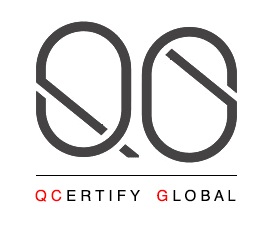What is HACCP Certification
Hazard Analysis and Critical Control Points (HACCP) is an internationally recognized system for reducing the risk of safety hazards in food. It is used to identify, assess, and control potential hazards throughout the food production process. HACCP certification demonstrates a company’s commitment to food safety and quality.
HACCP Certification is a systematic preventive approach to food safety that addresses physical, chemical, and biological hazards as a means of prevention rather than finished product inspection. It involves the identification of potential hazards, determination of critical control points, and establishment of measures to monitor and control these points.




Requirements For HACCP Certification
1. Commitment from Management
2. HACCP Team Formation
3. Prerequisite Programs
4. Product Description
5. Process Flow Diagram
6. Hazard Identification
7. Critical Control Points (CCPs)
8. Monitoring and Verification
9. Record Keeping
10. Corrective Actions
11. Internal Audits
Benefits of HACCP Certification
- Enhanced Food Safety: HACCP ensures that all potential hazards are identified and controlled, minimizing the risk of foodborne illnesses.
- Regulatory Compliance: Achieving HACCP certification helps companies comply with national and international food safety regulations.
- Consumer Confidence: Certification builds trust with consumers by demonstrating a commitment to food safety and quality.
- Market Access: Many retailers and buyers require HACCP certification, opening up new market opportunities.
- Operational Efficiency: Implementing HACCP can lead to improved processes and efficiencies within the organization.
HACCP Certification involves several key steps. Here’s an overview of the process:
1. Preliminary Steps
- Commitment from Management: Secure commitment from top management to support the HACCP process.
- Form a HACCP Team: Assemble a multidisciplinary team with expertise in various aspects of the production process.
2. Preliminary Tasks
- Describe the Product: Clearly define the product, including ingredients, processing methods, and intended use.
- Identify the Intended Use: Specify who the product is for and how it will be used.
- Construct a Process Flow Diagram: Map out the entire process from start to finish.
- Verify the Flow Diagram: Ensure the process flow diagram accurately reflects the actual process.
3. Principle 1: Conduct a Hazard Analysis
4. Principle 2: Determine Critical Control Points (CCPs)
5. Principle 3: Establish Critical Limits
6. Principle 4: Establish Monitoring Procedures
7. Principle 5: Establish Corrective Actions
8. Principle 6: Establish Verification Procedures
9. Principle 7: Establish Record-Keeping and Documentation Procedures
10. Implementation and Training
11. Certification Audit
12. Obtain Certification
13. Ongoing Compliance
ISO 27001 Certification
ISO 14001 Certification
Contact
-
18D, Troelstrastraat,
Rotterdam, 3038KV, NL -
NL +31 6 85479372
CA +1 647 861 9841
IN +91 73494 31654
EG +20 111 8801100
IQ +964 772 3262984
JO +962 7 9113 1312 - info@qcertifyglobal.nl
Documents
Download our company profile for insights into our services and expertise. Fill out the client information form to get started.






